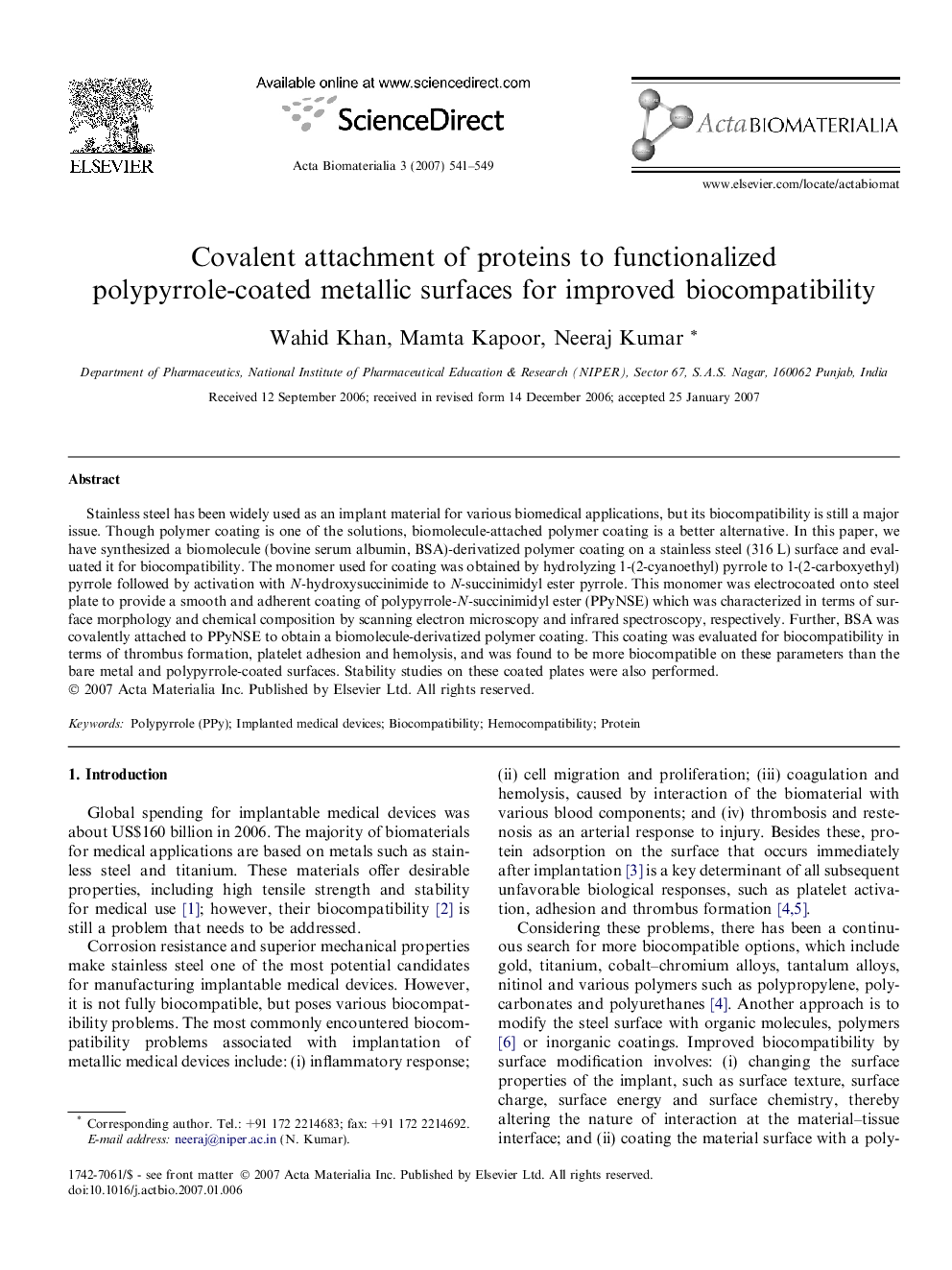| Article ID | Journal | Published Year | Pages | File Type |
|---|---|---|---|---|
| 2034 | Acta Biomaterialia | 2007 | 9 Pages |
Stainless steel has been widely used as an implant material for various biomedical applications, but its biocompatibility is still a major issue. Though polymer coating is one of the solutions, biomolecule-attached polymer coating is a better alternative. In this paper, we have synthesized a biomolecule (bovine serum albumin, BSA)-derivatized polymer coating on a stainless steel (316 L) surface and evaluated it for biocompatibility. The monomer used for coating was obtained by hydrolyzing 1-(2-cyanoethyl) pyrrole to 1-(2-carboxyethyl) pyrrole followed by activation with N-hydroxysuccinimide to N-succinimidyl ester pyrrole. This monomer was electrocoated onto steel plate to provide a smooth and adherent coating of polypyrrole-N-succinimidyl ester (PPyNSE) which was characterized in terms of surface morphology and chemical composition by scanning electron microscopy and infrared spectroscopy, respectively. Further, BSA was covalently attached to PPyNSE to obtain a biomolecule-derivatized polymer coating. This coating was evaluated for biocompatibility in terms of thrombus formation, platelet adhesion and hemolysis, and was found to be more biocompatible on these parameters than the bare metal and polypyrrole-coated surfaces. Stability studies on these coated plates were also performed.
